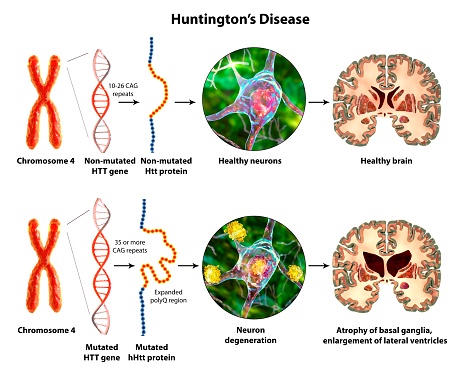What Will Happen to the US Economy in 2022?
If you are wondering what will happen to the US economy in 2022, there are several factors to keep in mind. Inflation will likely increase to 3.75 to 4%, personal savings will likely rise, and industrial production will slow. Rental income is also expected to drop to 2.9 percent by 2022. Inflation will remain above the Fed’s target until mid-2023, when it gradually falls back to normal.
Inflation will rise to 3.75-4% in 2022
The Federal Reserve is expected to aggressively pursue a new tighter monetary policy in 2022 to combat persistently high inflation. The new policy will reverse the past two years of “easy money” policy, which included extremely low interest rates and significant bond market intervention. However, the Fed must balance bringing inflation down with an economic recovery.
The US economy is predicted to grow by only a modest 1.7% this year, which is below the average growth rate for the past two decades. The first quarter of 2022 will see a slight contraction, although it is unlikely to be enough to push the US economy into a technical recession. Meanwhile, inflation is expected to peak at 9.1% in June and decline slowly, remaining above the 2% objective through 2023. In 2022, the Federal Reserve is expected to raise interest rates by one point, to 3.75%-4.
Inflation has continued to rise in recent months, with the Consumer Price Index climbing to a 40-year high in May. The Personal Consumption Expenditure (PCE) deflator, the Fed’s preferred inflation indicator, rose to 4.9% in April. This level is nearly 2.5x the 2.0% target. With the prices of many consumer goods, such as gasoline, rising, the median income household’s purchasing power has been impacted.
However, inflation is a risky aspect of tight monetary policy, because it can lead to a recession. The Federal Reserve has acknowledged the negative effects of restrictive monetary policy, but has cautioned against letting inflation linger for too long. While allowing the risk of a recession is a risk, it poses a larger risk than allowing the price of the consumer goods to rise.
Personal savings rate will increase in 2022
The personal savings rate is the percentage of income that individuals do not spend. This money is available for savings, tax payments, or interest. Since the financial crisis, the personal savings rate has declined as household net worth increased and credit costs rose. In 2008, the rate rose to 5.4 percent and then started to decline as individuals began to exercise more caution. By 2012, the rate had declined to 3.9 percent and is expected to rise to 3.7 percent by 2022.
However, the personal savings rate is still a key factor in the US economy. It drives real estate demand. In the past, a 20% down payment on a home was considered the gold standard. Despite the fact that the downturn has eased, consumers are still using their savings to meet their expenses. While this can be beneficial, it can also lead to a dwindling of savings, which could lead to a recession.
Although the U.S. economy experienced modest growth over the past decade, household purchasing power is expected to increase in the coming years. This growth will be particularly high among low-income households and Black and Hispanic individuals. However, this growth will be low across income levels, and the recent performance of the economy neutralizes the positive trends of 2016 to 2019. Still, the low unemployment rate and stable prices should support the modest income convergence across income groups.
The US economy will be vulnerable to the effects of high inflation in the next few years. While the economy recovered well from the pandemic, high inflation is still dampening demand and limiting growth. The economy is also facing a major demographic shift, as baby boomers continue to age and reduce their employment. These factors will dampen the economy’s growth and reduce discretionary spending.
Rental income will fall to 2.9 percent in 2022
The US economy will see a slowdown in rental income over the next decade. Instead of increasing at a 7.8 percent annual rate between 2002 and 2012, rental income will shrink by 2.8 percent a year from 2012 to 2022. Meanwhile, proprietors’ income will fall by 2.4 percent a year.
In recent months, shelter inflation has been driven largely by owners’ equivalent rent. As a result, would-be home buyers are choosing to rent instead of purchasing a home. Meanwhile, new leases are being signed at increasingly high rates, averaging mid-teens in some metro areas. These trends will keep core inflation rates high in the near term.
In March 2021, the US economy was adding jobs again. However, the share of adults who were having trouble paying their expenses fell sharply. This was largely due to the stimulus effect, which is beginning to fade. Meanwhile, other problems continued to affect the economy. Among other things, unemployment benefits are beginning to expire.
Meanwhile, consumption of medical services will increase by 3.2 percent a year, owing to the Patient Protection and Affordable Care Act. The aging population will also increase the demand for medical care. However, this sector will experience slower growth than other services, like personal care and telecommunications. In the past decade, the growth rate of this sector dropped from 3.9 percent per year between 1992 and 2002 to 1.2 percent annually during the decade 2002-2012. This trend will continue into 2022.
Meanwhile, the consumer price index, or CPI, is increasing at a faster pace. The core CPI (excluding food and energy) grew by 0.7 percent. This is the lowest level since the 1990s. Housing data, on the other hand, suggests a market correction is beginning. Increasing house prices and interest rates are restricting the demand for new homes.
Economic growth in Europe and China will be below 3% in 2022
The growth forecast is based on current economic data and factors that will have an impact on future growth. The global economy will grow between 2.5 and 2.8 percent in 2022. However, the growth of Europe and China will be below that level. It is therefore important to look at the factors that will influence future growth in these regions.
The Eurozone economy continued to expand, with real GDP increasing 0.2% in the third quarter and 2.1% on an yearly basis. This was lower than the 2.4% increase in the second quarter, and the slowdown comes amid concerns about a recession. Among the countries affected by the slowdown were Belgium and Austria. In Latvia, GDP fell by more than one percent in September.
China’s economy continues to rely on exports, despite the effects of the recent flu pandemic. The pandemic disrupted global supply chains and created intense demand for products like electronics and health products. Last year, exports in the country grew by 29.8%, but the pace of growth has slowed. In September, export growth was at 12.5%. The global economy will grow at a slower pace in 2022, according to Barclays’s updated forecast for both Europe and China.
While the EU and China will both see economic growth below three percent in 2022, growth in the two regions is likely to pick up in the second half of 2022. The biggest COVID-19 wave that hit the country last year has also disrupted the growth normalization process. In April, factory activity in China declined to its lowest level in nearly two years, according to the official manufacturing PMI. In June, the index registered its first monthly rise since February. However, the recent COVID-19 outbreaks have weakened China’s growth momentum, as they have hit private consumption and investment sectors.
The recent weak economic data for Europe and China have led to concerns that both countries’ economies may not be able to recover from the recent slowdown. Although it may seem that the world economy will continue to recover, the situation in the two regions is dire. In Europe, the yield on two-year German government debt has increased to over one percent, the highest since the 1980s. In China, the growth outlook is still grim.



